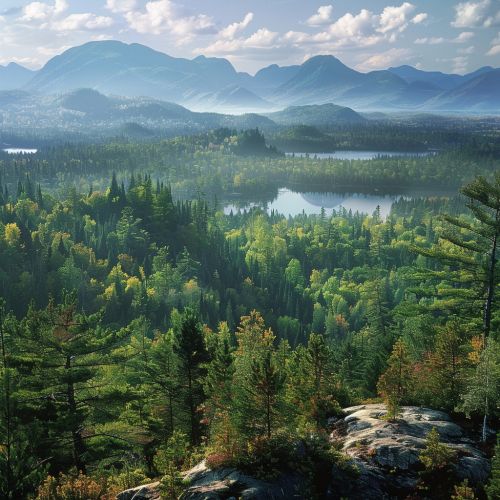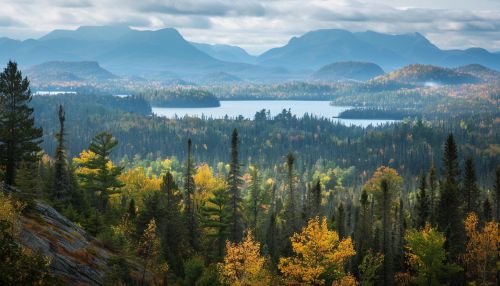Ontario
Geography
Ontario is the second-largest province in Canada, covering an area of over 1 million square kilometers. It is located in the east-central part of the country and is bordered by Quebec to the east, Manitoba to the west, Hudson Bay and James Bay to the north, and the United States to the south. The province's landscape is diverse, with a mix of forests, mountains, and lakes. The northern part of Ontario is sparsely populated and is dominated by the Canadian Shield, a vast area of ancient rock formations. The southern part of the province is more densely populated and features fertile farmland and large urban centers.


History
The history of Ontario dates back to the arrival of the first Indigenous peoples thousands of years ago. The region was first explored by Europeans in the 17th century, with the French establishing the first permanent European settlement, Fort Frontenac, in 1673. The area was later ceded to the British in 1763 following the Seven Years' War. In 1791, the province was created as part of the Constitutional Act and was originally known as Upper Canada. It was renamed Ontario in 1867 when it joined the newly formed Confederation of Canada.
Economy
Ontario has the largest economy in Canada, contributing more than a third of the country's total GDP. The province's economy is diverse, with key sectors including manufacturing, services, and natural resources. Ontario is the leading manufacturing province in Canada, with industries such as automotive, aerospace, and technology playing significant roles. The services sector, including finance, real estate, and healthcare, also contributes significantly to the province's economy. Ontario is rich in natural resources, with mining and forestry being important industries in the northern part of the province.
Demographics
Ontario is the most populous province in Canada, with a population of over 14 million people. The province is home to people from a wide range of cultural backgrounds, making it one of the most multicultural areas in the world. The majority of the population is of European descent, but there are also significant populations of people of Asian, African, and Indigenous descent. Ontario's largest city, Toronto, is the most populous city in Canada and the fourth most populous city in North America.
Government and Politics
Ontario operates under a constitutional monarchy and a parliamentary democracy. The monarch is the head of state, while the Premier of Ontario is the head of government. The province's legislative body is the Legislative Assembly of Ontario, which consists of 124 members elected from single-member constituencies. The province is also represented in the federal government, with 121 seats in the House of Commons of Canada and 24 seats in the Senate of Canada.
Education
Ontario has a strong education system, with publicly funded primary and secondary schools, as well as numerous post-secondary institutions. The province's education system is overseen by the Ministry of Education. Ontario is home to several internationally renowned universities, including the University of Toronto, McMaster University, and the University of Waterloo.
Culture
Ontario's culture is a reflection of its diverse population. The province is known for its vibrant arts scene, with numerous galleries, theaters, and music festivals. Ontario is also home to several major sports teams, including the Toronto Maple Leafs in hockey, the Toronto Raptors in basketball, and the Toronto Blue Jays in baseball.
